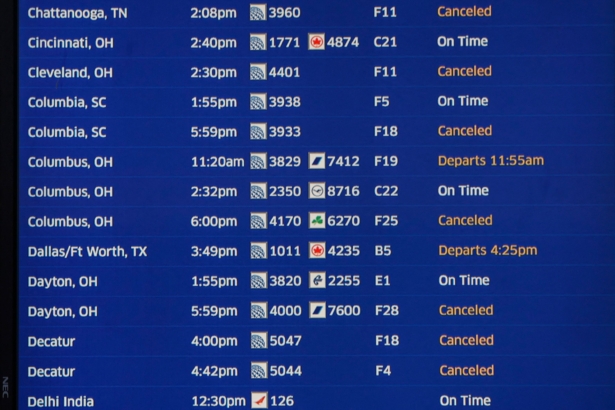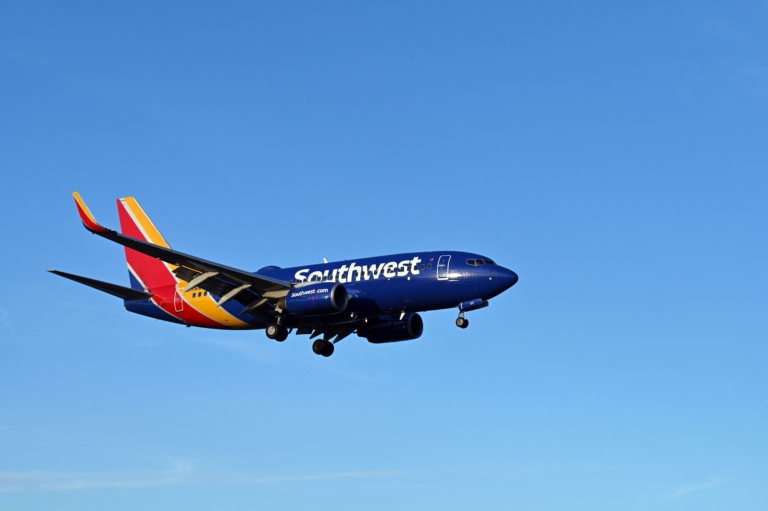The U.S. Department of Transportation (DOT) says it will investigate what caused Southwest Airlines’ “unacceptable rate of cancellations and delays” in the wake of Winter Storm Elliott.
In a tweet posted just after 9 p.m. on Dec. 26, the DOT said Southwest’s flight disruptions and “reports of lack of prompt customer service” were cause for concern.
“The Department will examine whether cancellations were controllable and if Southwest is complying with its customer service plan,” says the tweet, which was viewed by 4.4 million people in less than 12 hours.
That plan spells out how the airline is supposed to handle issues such as cancellations and refunds.
About three hours after the DOT’s announcement, Transportation Secretary Pete Buttigieg posted the DOT statement and wrote on Twitter: “I’m tracking closely & will have more to say about this tomorrow.”
The Epoch Times has asked the airline to comment on the DOT’s investigation, which could lead to fines or other punitive action against Southwest if the airline is found to be noncompliant with regulations.

Airline ‘Fully Staffed’
In a news release that preceded the DOT’s announcement, Southwest stated: “We were fully staffed and prepared for the approaching holiday weekend when the severe weather swept across the continent.”
Southwest is the largest carrier in 23 of the top 25 travel markets in the United States, the airline said. “These operational conditions forced daily changes to our flight schedule,” the airline said. The demands overwhelmed “the tools our teams use to recover the airline,” Southwest said.
Jay Ratliff, an aviation expert for more than three decades, says it’s disingenuous for the airline to blame the weather.
Ratliff told The Epoch Times: “Southwest Airlines has just had an operational meltdown. There’s really no other way to say it. Other airlines had seen the storm coming, and the storm came and passed.”
Although the snow and bitterly cold temperatures affected all U.S. airline travel to some extent, Southwest was responsible for the lion’s share of problems across the nation, Ratliff said.
For example, on Dec. 26, American Airlines, which runs more flights than Southwest, canceled 12 departures, fewer than 1 percent of its total; in contrast, Southwest canceled 2909 flights—71 percent of its total—affecting an estimated 360,000 Southwest passengers in a single day, Ratliff said.
That same day, about 4,000 total flights were canceled across the United States, meaning that other airlines were responsible for roughly 1,000 cancellations in total.
Lack of Automation
Why is Southwest in particular facing such problems? Ratliff thinks he knows part of that answer.
Citing statements made by Southwest executives, Ratliff said the airline was stuck doing a lot of scheduling work manually—a process that should be fully automated. He thinks that’s likely a major culprit for the mess now entangling Southwest, its customers, and employees.

“When you have so many flights canceled in so many different locations, and you have to get aircraft and crew to certain spots at certain times, the idea of processing that manually is not next-to-impossible. It’s impossible,” he said.
He said the airline “really dropped the ball” in terms of automation. “They should have invested money years before; they’ve not done it,” Ratliff said. “And, unfortunately, as as a result, you have passengers now that trusted Southwest Airlines for their holiday travel–and they chose wrong.”
The impact is huge. Ratliff breaks down the numbers this way: Southwest runs about 3,000 or 4,000 flights a day. If they carry about 150 passengers per flight, that’s 450,000 to 500,000 people per day. “Multiply that by a week—and, well, now you’re talking about 3.5 million people to 4 million people,” he said. “There’s your millions of people that are being inconvenienced right and left.”
Stranded for New Year’s?
Southwest, in its posted news release, said it will take a while to return to normal. “As we continue the work to recover our operation, we have made the decision to continue operating a reduced schedule by flying roughly one-third of our schedule for the next several days,” the airline said.
As of Dec. 27, passengers and crews were still stranded across the country, with little to no indication of when they might reach their destinations, Ratliff said. Weary travelers, pilots, and flight attendants are sleeping in airports; photos posted on social media show stray luggage accumulated in various airports.
On top of that, if passengers try to book flights on competitors’ airlines, they’re facing rates that seem to be exorbitant to them, ranging from $1,000–$3,000 for domestic flights, according to screenshots posted on Twitter.
The ripple effects will linger for several more days, Ratliff said.
Behind the scenes, Federal Aviation Administration regulations add layers of complexity that are unknown to most people. For example, each flight crew has a limit on the number of flight hours allowed per day.
“So you have to match everything up so that you don’t have a crew that is almost out of time taking over a flight,” Ratliff said. “So all of this stuff requires time to match everything up correctly. And it’s like putting together a big puzzle and being told that you have minutes to do it instead of hours. It’s impossible. And that’s what the Southwest employees are finding right now.”
“It’s something that is probably one of the worst examples of customer service we’ve ever seen from Southwest Airlines,” Ratliff said. “And it couldn’t have happened at a worse time, with the holiday travel season upon us.”
Ratliff predicts Southwest will need until Jan. 2 or later to recover. “But of course, by that point in time, the high demand for travel for the holidays is going to be over,” he said.
Ratliff is hopeful that Southwest can find a way to remedy its deficiencies and avoid such issues in the future.
“Southwest is a great airline,” he said. “They’re just not acting like it.”
From The Epoch Times

